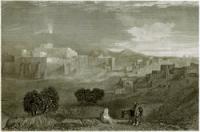VIDEO: Convert liter to kg
Convert liters to kg in everyday life
In order to be able to convert liters into kg, you should learn something about the basic terms. First of all, it has to be clarified what liters and kg actually are. Liter is a term for the content in a room, i.e. for the volume.
- Water can be cited as a noticeable quantity that is known to most. 1 liter of water corresponds to 1 kg, so almost everyone has it in their minds. If you pour 1 liter of water into a 10 x 10 x 10 cm container, the container is full. Since 10 cm corresponds to 1 dm (decimeter), the container is 1 x 1 x 1 dm in size. In other words, it is 1 dm3.
- So now you know what 1 liter is in dm. The kg is a unit of weight, as you know. Everyone knows their body weight in kg. The labels in the department store also show the prices for 1 kg so that you have a comparative size to see whether an item is rather expensive or cheap.
- Stick to the example with water. If you now put the measured 1 liter of water on the scales, the scales will show almost exactly 1 kg. If you do the same with flour, you will see that 1 liter of flour is not 1 kg.
How can you convert liters to kg?
What does a liter of milk weigh?
One liter of water weighs 1 kg. But what about other fabrics? Is it always like that? …
Convert liters to kg with the mechanics
The word mechanics may astonish some. However, if you convert liters to kg, you need to know the density of the substances. The density belongs to physics and there to the mechanics. In essence, this means that all things in the world have a different density.
- To be precise, this means that 1 liter of a substance does not weigh exactly as much as a liter of another substance. If you manage to squeeze a fabric tightly, the fabric weighs exactly as it did before, but does not take up as much space. It's denser than before.
- So in order to be able to convert from liters to kg, you have to know the density of things.
- To clarify this, you will now get to know some things of everyday life and their density. Distilled water has a density of 1.00 kg / dm3, Natural gas 0.83 kg / dm3, Petrol 0.7 kg / dm3, Flour 0.6 kg / dm3 and potatoes 0.7 kg / dm3.
Convert liters to kg
- You know from everyday life that a bag of water is heavier than a bag of flour of the same size. So now you will do the math. 1 liter or 1 dm3 Water weighs 1 kg. Here you have to calculate as follows: The weight of 1 kg of water divided by the density of water (1.00 kg / dm3). 1: 1 = 1, so the result is that 1 liter of water is equal to 1 kg.
- Do the math with flour. Then the weight is again weighed 1 kg of flour, divided by the density of flour (0.6 kg / dm3), which is 1: 0.6 = 1.667. So 1 kg of flour corresponds to 1.667 liters.
- In conclusion, remember that when you convert from kg to liters you have to divide the weight by the density and you get liters.
- Now take 1 liter of flour. If you convert that to kg, you have to calculate: 1 liter times the density. 1 x 0.6 = 0.6 kg. To take the previous example again, the following applies: 1.667 liters of flour times the density 0.6 = 1 kg of flour.
- So here it applies that liter times density equals kg.


